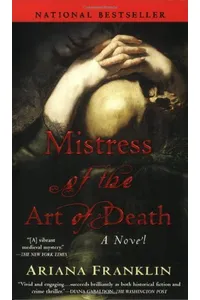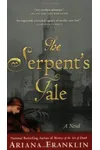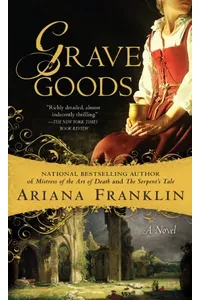Step into the shadowy, thrilling world of the Mistress of the Art of Death series, where medieval mysteries unravel through the sharp mind of Adelia Aguilar, a trailblazing female forensic doctor in 12th-century England. Ariana Franklin’s historical crime fiction saga blends gritty investigations with rich historical detail, inviting readers to explore a world where science dares to challenge superstition.
With its clever mix of CSI-style forensics and Chaucerian intrigue, this series captivates fans of historical mysteries. Let’s dive into the origins, stories, and lasting allure of this remarkable series!
How Mistress of the Art of Death Began
Ariana Franklin, the pen name of British journalist and novelist Diana Norman, crafted the Mistress of the Art of Death series to marry her love for history with her knack for storytelling. Inspired by the progressive medical school of Salerno, where women could train as doctors, Franklin imagined Adelia Aguilar—a Sicilian pathologist navigating a male-dominated, superstition-laden England. Published in 2007, the first novel won the Ellis Peters Historical Dagger Award, launching a series that would enthrall readers with its bold heroine and meticulous research.
Franklin’s background as a historian and biographer shines through, grounding the series in the turbulent reign of King Henry II. Her goal was to spotlight unsung voices, particularly women and marginalized communities, while weaving gripping crime narratives.
The Heart of Mistress of the Art of Death
The series spans five books, with the first four penned by Franklin and the fifth completed by her daughter, Samantha Norman. The debut, Mistress of the Art of Death, introduces Adelia as she investigates gruesome child murders in Cambridge, blamed on the Jewish community. Her forensic skills uncover a sinister truth, all while navigating prejudice and danger. The sequel, The Serpent’s Tale (also published as The Death Maze), sees Adelia probing a royal poisoning, entangled in political intrigue. Grave Goods explores a mystery tied to Glastonbury Abbey, possibly involving King Arthur’s remains, while A Murderous Procession follows Adelia on a perilous journey. The final book, Death and the Maiden, wraps up her saga with a haunting case.
Themes of gender, power, and justice pulse through the series. Adelia’s struggle as a woman in a patriarchal society mirrors broader tensions between science and superstition, progress and tradition. Franklin’s vivid prose paints a bustling medieval world—think muddy streets, fervent pilgrims, and shadowy convents—while her mysteries keep readers guessing. The series’ dark humor and subtle romance add layers, making Adelia a heroine who’s as relatable as she is revolutionary.
Franklin’s research into medieval medicine, religious conflicts, and Henry II’s legal reforms enriches the narrative, offering a window into a time of upheaval and transformation. Fans praise the series for its balance of historical accuracy and page-turning suspense.
Why Mistress of the Art of Death Resonates
The Mistress of the Art of Death series has left a mark on historical crime fiction, earning accolades like the British Crime Writer Association’s Dagger in the Library Award for A Murderous Procession. Adelia Aguilar stands out as a proto-feminist icon, defying medieval norms to champion truth and compassion. The series’ blend of forensic science and historical drama has inspired readers to explore similar works, like Ellis Peters’ Brother Cadfael mysteries.
Its enduring appeal lies in its ability to transport readers to a vividly realized past while tackling timeless issues—prejudice, power struggles, and the quest for justice. Fans on platforms like Goodreads celebrate its strong characters and unpredictable plots, cementing its status as a cult favorite.
- Publication Years: 2007–2020
- Number of Books: 5
- Awards: Ellis Peters Historical Dagger (2007), Dagger in the Library (2010)
- Setting: 12th-century England
About Mistress of the Art of Death
Grab Mistress of the Art of Death and dive into a world of medieval intrigue, where Adelia Aguilar’s courage and wit light the way through the darkest mysteries!




